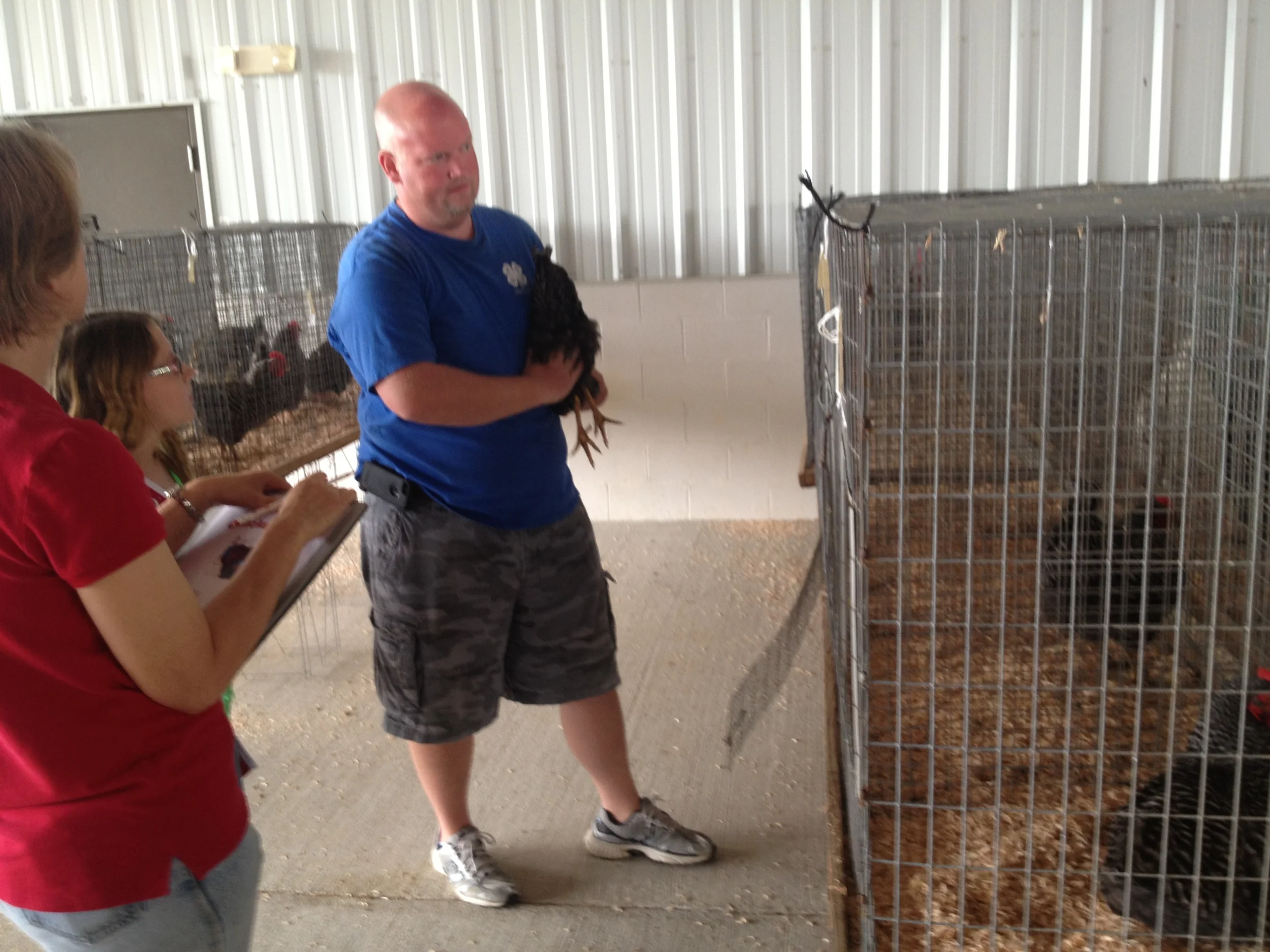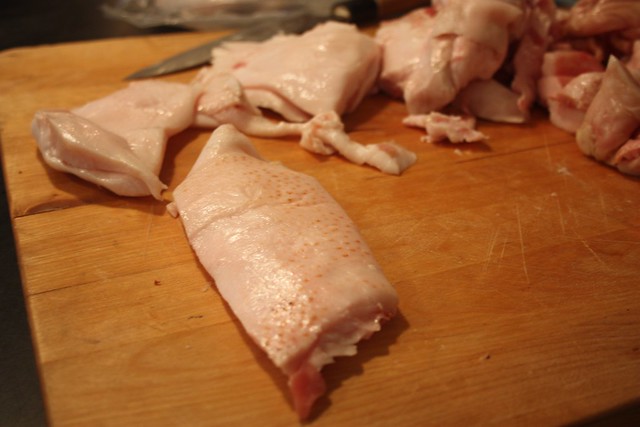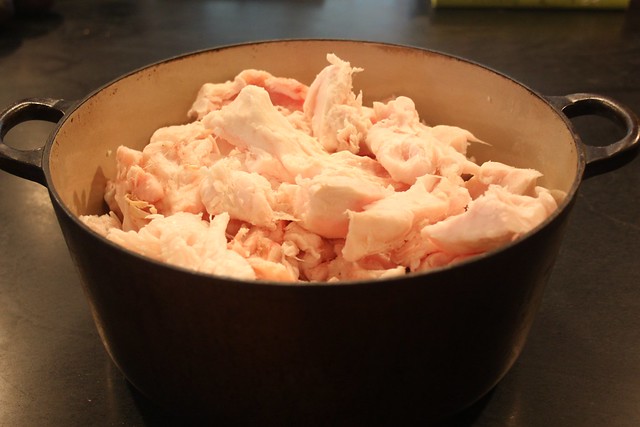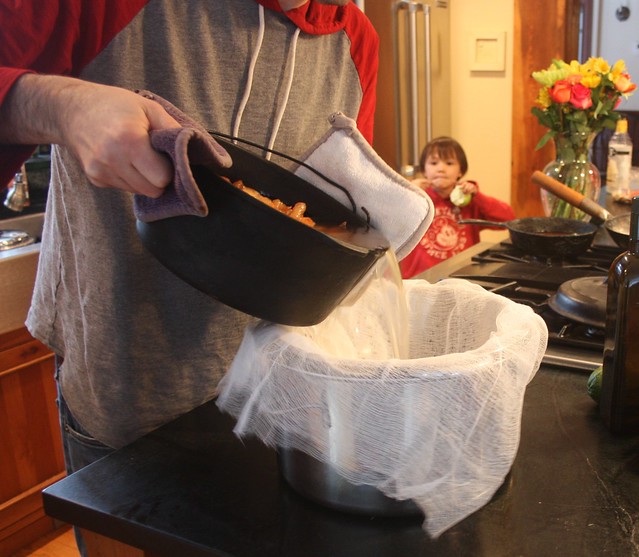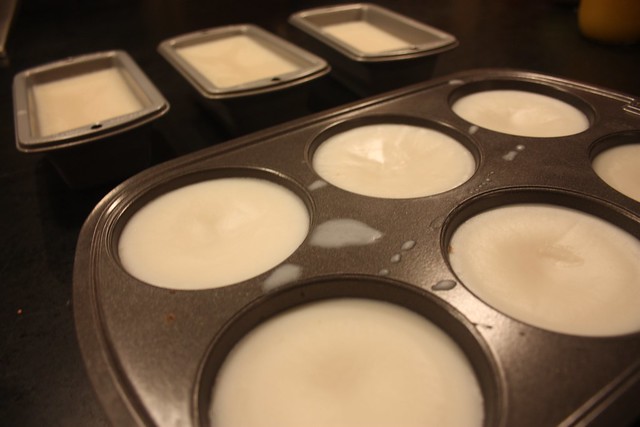Kain Na - A Filipino tasting menu
/Last night, we hosted dinner for a few friends. We had been talking about doing this for a while - but we had always hesitated at the menu. We tend to go for more family style, buffet or pot-luck gatherings, where we all stand around and chat. But winter is long, and we wanted to inject a little sociability into the snow-laden months. So we set a large table, and started coming up with ideas.
We had been inspired by watching a couple of older episodes of the Bravo competition cooking show Top Chef - a couple of seasons ago, a Hawaiian chef named Sheldon Simeon had shown off his Filipino heritage and cooking skills.
I keep waiting for Filipino food to be 'discovered'. Outside of a couple of enclaves in California (or a friendly Filipino home), it can be really hard to find. Filipino food isn't like Chinese food, or Thai, or Vietnamese. Except it has elements of commonality with all of them. As well as a heavy Spanish and even American influence from the colonial periods.
It's heavy on thin, tart & vinegary sauces, on seafood and pork - proteins readily available across the islands, and on combinations that show off the fusion that have defined the Philippines for hundreds of years.
We put together a few of our favorites into a menu, and sent it out to some of our adventurous friends.
'Kain na' is the first Tagalog phrase I learned when I started dating my Bride. Her mom said it every time I visited.
It means "Eat now".
In a moment of inspiration, I cut the pages out of old paper grocery bags to print the menu - we had to get a little balikbayan brown in there. Along with embroidered, woven placemats we brought back from Manila and an authentic Barrel Boy, we had our place setting. The only things missing were the ubiquitous giant wooden fork & spoon and a carved, 3-d wooden Last Supper. But we made do.
Preparing some of the dishes took a bit of effort. One of the desserts required fresh grated coconut. My Bride found a kudkuran online - it's a little oblong stool with a viciously serrated metal end for scraping out the inside of a fresh coconut. After a few example strokes, she assigned me the rest of the task. I managed to scrape a few fingertips into the bowl as well on my first coconut before I figured out how to operate the simple set up in safety.
But hey, at least I wasn't wearing dark socks & crocks...
Our guests were a mix of local folks and foodies. We knew they all were up for just about anything, but we still started easy for the appetizer. Lumpia - a little fried spring roll, stuffed with ground pork, shrimp and water chestnuts and a pork BBQ skewer.
The pork is marinated in soy sauce, garlic, and that Ancient Filipino Secret: 7-Up. I don't know what the hell they were marinating their pigs in before the GIs showed up with 7-up, but the sugar and carbonation do something wonderful to the pork, tenderizing and caramelizing the meat.
We served them with banana ketchup (made from real bananas) and sukaang maasim - a spicy, palm vinegar marinated with chilies. I could eat this stuff forever.
This vinegar alone is a reason to seek out your nearest Filipino and force them to hand over their stash. It is the superhero of vinegars. It kicks the ass of every other vinegar you have in your cabinet and then is called to City Hall by the Mayor, to be awarded the key to the city, putting all the other normal vinegars to shame.
You will thank me for this information later, when you have tried it.
I was disappointed that I couldn't offer some Filipino beer to go along with dinner. For something like lumpia, it's the perfect accompaniment. But there's only one beer made or served in the Philippines - San Miguel. And I mean, unless you're in a fancy hotel someplace where a lot of tourists hit, that's the only beer that's available. If you're lucky, the restaurant might have both the standard San Miguel pilsen and their slightly darker San Miguel 'Red Horse' label. But the nearest six pack of San Miguel to our town is more than 150 miles away, someplace near New York. So we settled with some pretty good Mexican lager or white wine as substitute offerings.
For the soup, we started pushing the boundaries a little. This is sinagang na isda - a tamarind based soup with salmon, mustard greens, daikon radish, onion and tomatoes. The broth is light, clear and fragrant.
Tamarind is a sweet/sour pod - you can pull out the stringy, sticky innards to make a paste found from Thailand to Mexico. But this dish elevates it somehow - it's at once homey (it's the kind of soup your mother-in-law makes for you when you're not feeling well) and elegant. There are only 5 or 6 ingredients in the soup, but it is complex and to be savored.
I knew we were doing well when every bowl came back empty.
For our main, we plated three separate tastes. Two classics - pork adobo and pancit bihon (the noodles), and a third crab-and-squash dish stewed in coconut milk that is mind blowingly good.
Adobo (in the middle) is probably the most famous of all the dishes that have made it out of the Philippines. If you've tried one thing, it's probably this. Often made with chicken (though I prefer pork), the meat is braised in a soy sauce & vinegar combination. Sometimes flavored with a little achiote, garlic or other seasoning, it's straight forward and delicious.
The guinitaang kalabasa stew has a base of squash and coconut milk, with lump crab meat stirred in to heat through. Both of these are served with steamed rice. They're alive with hearty, smoothly tangy flavors.
The noodle dish is your standard Filipino family party fare. I've never seen pancit bihon cooked and served in quantities that wouldn't serve a small army. It's rice stick noodles, stir fried vegetables, chicken, soy sauce and patis (fish sauce). Topped with scallions, slices of boiled egg and a tiny fresh squeezed citrus called calamansi. It's kind of the pad thai of the Philippines - it's street food, with a hundred variations, but all the same basic core.
The Critter learned to make this dish from her Lola (grandmother) on the last visit, and the pancit was her contribution to the party.
That, and we had her help plate. It was an adults-only dinner. It sounds awful unless you're a parent. But if you are a parent, you may remember that there was a time before children when you sat with other adults and enjoyed a meal without constant interruptions for more juice/the bathroom/I dropped my napkin/the bathroom/why isn't our food here yet/can you cut my food for me/the bathroom.
So we set the Boy up with a movie to watch, and paid the Critter a few extra bucks to be helping hands in the kitchen and help plate each course. She loved it, and was proud of the art of each setting she was able to have fun with.
And we got a dinner with other adults and fewer bathroom breaks. Everybody wins.
Finally, dessert was a trio of my Bride's favorites: Leche flan - a Filipino spin on a Spanish classic. Pitsi-Pitsi - a flattened patty of steamed, grated cassava & sugar dredged in coconut. And her absolute favorite, Halo-Halo, which translates literally as 'Mix-Mix'.
The pitsi-pitsi recipe she used was her aunt's, who replaces the cassava with glutinous rice. The coconut came from the grating efforts we had done earlier in the day on the kudkuran. I'm glad to say that none of the pitsi-pitsi was stained pink despite my poor, damaged hands.
Halo-Halo is a mix of shaved ice (you can see the Critter scooping it up in the picture above), with slices of jackfruit, cubes of grass-jelly, sweet red beans, toasted rice, ube - a sweet purple yam - and some kind of syrup, condensed milk and maybe some avocado or coconut ice cream. Or that Barney-purple ube ice cream if you can get it. (We settled for coconut.)
Each course was a hit - by the time we cleared the last plate, every one was full and smiling, and slow to push their chairs back from the table. A good sign. We were pretty sure that everyone found some new things that they liked during dinner.
I don't know when Filipino food will catch on mainstream here in the US. But until it does, I'm glad that I, at least, have a good source to keep satisfying my cravings!










